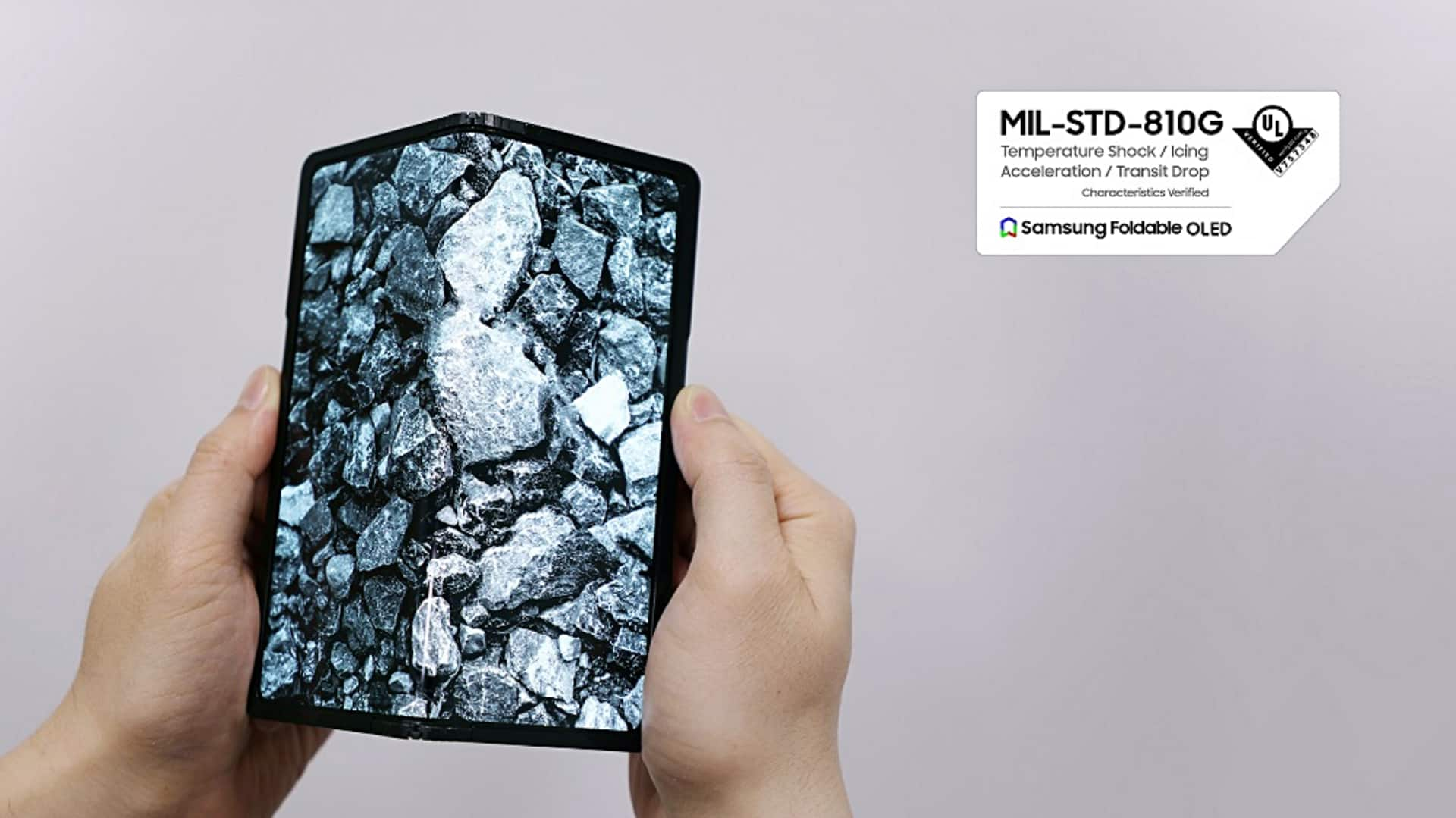
Samsung's upcoming foldable phones may survive extreme temperatures, falls, shocks
What's the story
Foldable panels from Samsung's display manufacturing unit, Samsung Display, have passed the US Department of Defense's MIL-STD 810G standard. It's the first time in the display industry any company has achieved this certification for foldable panels. Military-grade tests include temperature and transit shocks to evaluate a product's durability under extreme conditions. Notably, some of Samsung's newer foldable phones already offer IP68-rated dust and water protection, highlighting the Korean tech giant's commitment to building more durable devices.
Temperature tests
Rigorous testing in harsh environmental conditions
To test its 7-inch-range foldable panels, Samsung Display enlisted the help of UL Solutions, a global organization specializing in applied safety science. The panels were subjected to extreme temperature tests. These included being frozen under a 6mm layer of ice for four hours at -10°C and exposed to temperatures ranging from -32°C to 63°C for two hours each, with the test repeated three times over 12 hours.
Transit tests
Panels withstood transit shock and acceleration
Samsung Display's foldable panels also underwent transit shock and acceleration tests. The panels were dropped 26 times from a height of 1.22 meters with different fall directions, simulating real-world usage. They were also subjected to extreme outdoor activities by being spun at speeds up to 10.5 times the force of gravity, similar to astronaut training in a 360-degree spinning centrifuge. For aircraft or helicopter parts, this is the most extreme acceleration test.
Insights
Implications for foldable display applications
The successful completion of the military-grade tests dispels the common misconception that foldable displays are less durable than their non-foldable counterparts. Samsung Display holds more than 1,800 patents related to foldable technology. With the latest certification, the company expects foldable panels to be used in a wider range of devices and environments, overcoming durability concerns and potentially opening the door for new applications in the near future.